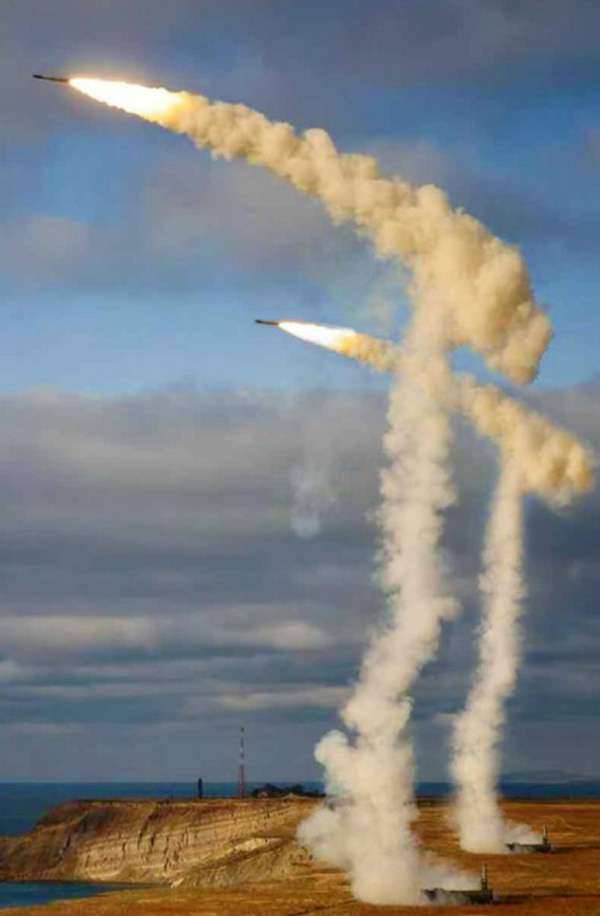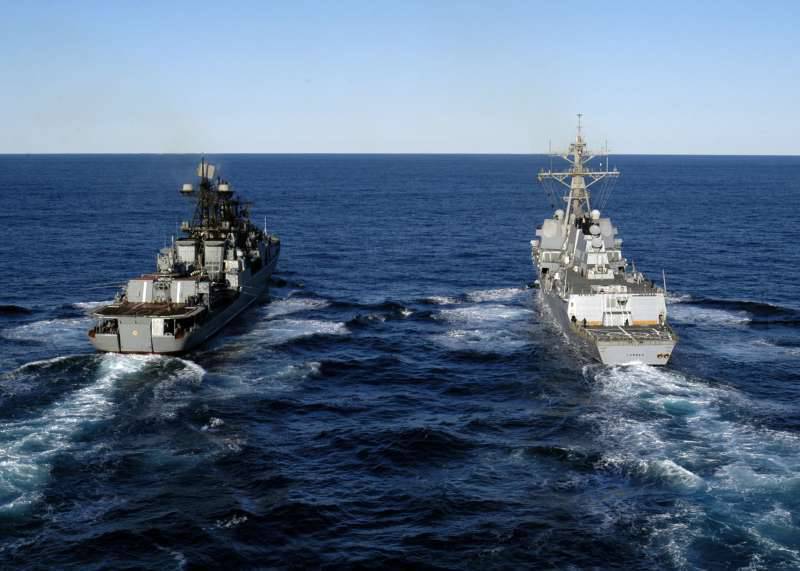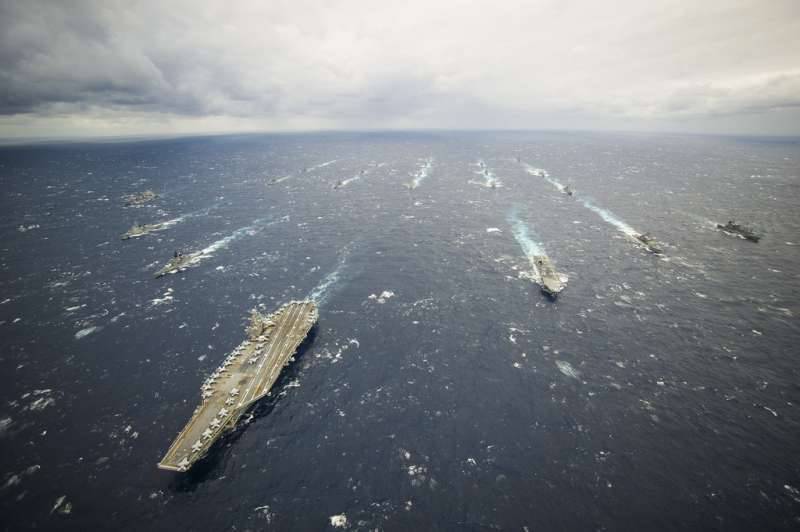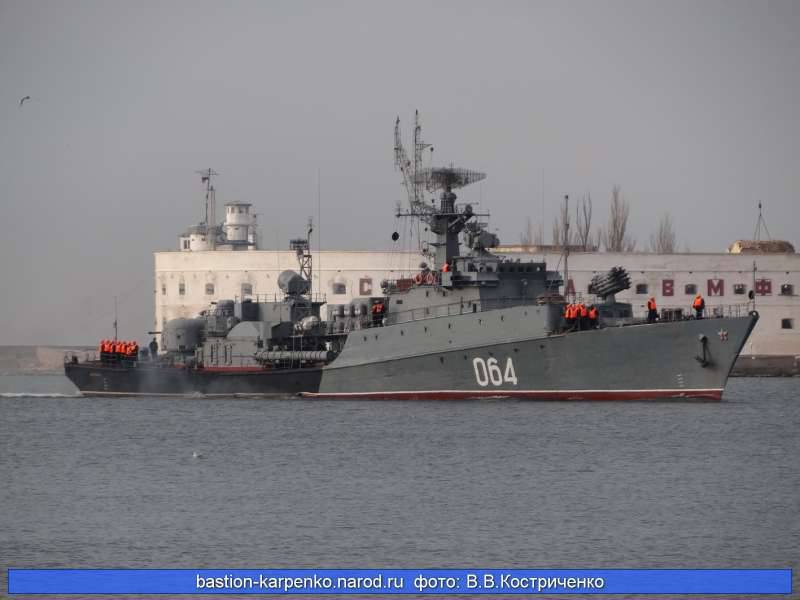Shipboard armor in the XXI century. All aspects of the problem. Part of 1
This article will again discuss the booking of ships and anti-ship missiles. The topic is so hackneyed that it causes a sharp rejection, and the author would not dare to disturb the public with his “fabrications” if it were not for the desire to share thoughts that highlight the problem from a new point of view. This article is an attempt to understand an interesting technical problem using amateur calculations and common sense available to the average man.
On the issue of "classification"
For a complete understanding of the subsequent calculations, it is necessary to touch upon the trivial issues of weapon classification. This is necessary because many people overlook this important issue.
As you know, any weapon has its purpose and is classified according to this. Nobody demands the ability to hit detached from ICBMs Tanks on the battlefield, and no one demands from ATGMs to destroy cities on other continents.
Anti-ship missiles also have their own narrow purpose. RCC are tactical (TN), operational-tactical (RTD) and operational assignment (IT). In accordance with the basics of military art, the application of the former influences the outcome of the battle, the latter influences the outcome of the operation. Operational-tactical anti-ship missiles occupy an intermediate position and are able to influence both the outcome of the battle and the outcome of the operation as a whole.
It is the purpose of the anti-ship missiles that determines their specific technical characteristics and, accordingly, their combat capabilities. The main missiles of the TN, the most common in the world, are Uranus, Harpoon, Exocet, P-15, RBS-15, C-802 and many many less famous rockets. CRP OT are less common, but still available to most developed maritime powers (Mosquito, Brahmos, C-602). PKR IT was created exclusively in the USSR and the USA (Tomahawk, Basalt, Granite, etc.). In accordance with the presented classification of the CRP are:
RCC TN for the destruction of warships classes: boat, corvette, frigate
PKR OTN for the destruction of warships classes: frigate, destroyer, cruiser. RCC HE for the destruction of warships classes: cruiser, aircraft carrier. The destruction of transports and minor combat ships is not strictly regulated.
The issue of RCC classification is generally ignored. This is clearly seen in many publications, where they discuss the possible use of Garpun or Exocoet type anti-ship missiles on modern destroyers and cruisers. Although it is clear that they are not intended for such purposes. The closest analogue of the PKR Harpoon, Russian Uranus, is designed to destroy ships with a displacement of up to 5000 tons, as well as sea transports. Those. targets in the form of destroyers and cruisers do not fall into this set at all.
Of course, this does not mean that the RPR OTN cannot be used to sink a missile boat, and the RCC TH cannot attack the cruiser. Of course it can. However, the developer did not provide for such an application, and that is why this use of missiles is not optimal.
Naval connoisseurs stories remember the Falkland War - they say, there Exoseta drowned destroyers. However, the displacement of the British destroyers of the 42 project does not exceed 5300 tons, which almost corresponds to the class of the RCC TH, that is, Exocset. In this case we are talking about the destroyers of that era. Today, ships of this class are confidently approaching the 7-8 mark of a thousand tonnes of displacement and are already going beyond the level of targets for the TAC missile.
The prevalence of CRP and the threat of their use
RCC TN possess fleets of almost all maritime powers of the world. This determines their extremely high prevalence. The carriers of such anti-ship missiles are boats, corvettes, frigates, tactical aircraft aviation and some destroyers. It would seem that protection against such a massive weapons is the highest priority. After all, no one forbids the use of anti-ship missiles on destroyers and cruisers, although this is not their main task.
However, in practice, everything is exactly the opposite. The recognized world leader of military shipbuilding, USA, removes near-zone air defense weapons (Vulcan 20-mm submachine guns) from their destroyers of the Arly Burk type. This is done from cost savings. But does save on the first priority? All that the destroyer could rely on is shipboard air defense and electronic warfare equipment. Near defense is now absent altogether. To understand this absurd situation, it is necessary to look at the question somewhat more widely.
The world of maritime powers has long been divided into several large parts. On the one hand, these are the USA and NATO, as well as Japan. In the event of a major war, they will act as a united front, like a coalition. On the other hand, this is China. The third party is Russia. And finally, all the other marine countries of the world. The last group is the largest, but the most technologically weak and poor. These countries do not have the strength and money to build or buy ships larger than a frigate, and their main weapons are the RCC TN. All this makes the most widespread type of anti-ship missiles precisely the anti-ship missiles TN, and the most widespread class of ships in the world are corvettes and frigates. In essence, these are fleets for wars of equal strength fleets third world countries. Such fleets are almost unable to confront the "big" powers, and all they can count on is luck and chance.
Destroyers and cruisers, and together with them both RCC OTN and RPC HE can only afford the first three groups. In fact, massively destroyers are built today only by the United States, China and Japan. And only the Russia and the People's Republic of China create the UN RCC and the RPC OTN. It turns out that some have large NK, but no large missiles, while others have serious missiles, but there are no serious ships. The essence of this apparent imbalance will become clear later.
US problems
The United States is the main maritime power of the world. It is the United States most fully develop its sea power. However, it is for some reason that they are less concerned about the threat of their unarmored ship forces in the form of destroyers and cruisers. The United States could create an armored destroyer a long time ago, which is not afraid of numerous anti-ship missiles all over the world, and perhaps the rest of anti-ship missiles, but do not. Why are they so careless about their extremely expensive ships and professional sailors? It can be assumed that the reason is ordinary human stupidity, but are we not too low on the richest and most toothy country in the world?
The United States has carried out and is conducting many “punitive” operations against “non-democratic” regimes in which they are using their fleets in the most active manner. However, so far none of Execetes (or another RCC) has hit a US Navy ship in a combat situation. There were only a few accidents (the Stark frigate, crew negligence) or terrorist attacks (the Cole destroyer, crew negligence). Both of these and other cases are not typical or regular. But it was in a combat situation that nothing of the kind happened. Although the threat was, for example, in Libya or Iraq.
US Navy and Allied carrier strike group. Does anyone see here at least one target for a tactical missile such as a Harpoon or an Exochet? But you can see many goals for PKR larger, for example, for Mosquito, Bramos, Granite, Basalt and aircraft X-22
The essence of punitive operations is to act against a deliberately weak opponent. As mentioned above, most countries of the world cannot afford to create a strong fleet, saturated not even by aircraft carriers or destroyers, but by primitive corvettes. These countries are simply not in a position to form a one-time rocket salvo with their missile missiles from their forces. A volley of such strength that could threaten not only the US AUG, but even a single destroyer. Most boats or corvettes carry a typical load on the 4-8 CRP TH. This is quite enough for the fleet of Kenya to threaten the Somali fleet. But it is absolutely not enough to threaten even one US destroyer. Even a lonely American destroyer, being on full alert, easily disrupts any type of 8-16 anti-ship missiles that any type of fleet can have. Some of the missiles will be shot down by an air defense missile system, some will be sidetracked with electronic warfare equipment, against which cheap anti-ship missiles do not have. And in the ideal case, AUG aviation will not even let the enemy into the range of rocket salvo.
All countries that can form a one-time PCR salvo that can actually threaten the ships of the US fleet are either part of NATO, or it is the PRC and Russia. There are still some fairly strong maritime powers, but it is very difficult to imagine a conflict between them and the United States (India, Brazil, Argentina). All other countries do not have the strength to create a serious threat to the US Navy.
As for a possible war with the Russian Federation or the People's Republic of China, the Americans, apparently, do not even plan to seriously fight at sea. Nobody believes in the reality of such a war, because it will be the nuclear end of the world, at which an armored destroyer will be the most useless thing in the world.
But even if the conflict between NATO and the Russian Federation is non-nuclear, the attitude of the United States to the Russian Navy is about the same as the attitude of the Germans in the 1941 year towards the Soviet Navy. The United States and NATO are clearly aware that they have absolute superiority on the high seas. Even at the peak of its might, the USSR could not equal the United States and NATO in terms of the size of its fleet, and even more so today. But exactly the opposite, the Russian Federation dominates its shores. Therefore, none of the American admirals (like the German admirals in 41) will send in their right mind the main forces of the fleet to the shores of Russia.
And the meaning of the emergence of AUG somewhere near Murmansk or Vladivostok is profoundly useless: even by leveling these cities with the ground, the United States will not achieve any strategic success. Russia can live for centuries without access to the seas. To inflict a really painful blow on her, she must be defeated on land, not on the sea.
What will the US Navy be doing in a non-nuclear conflict with the Russian Federation or China? The answer is simple: he will guard the trans-oceanic convoys. To protect the fleets of the Russian Federation and the People's Republic of China from trying to get out of the coastal zone and cause at least some damage to the US on the high seas. Having no support in the world ocean in the form of allies and a system of bases, the fleets of the PRC and the Russian Federation will be forced to use long-range aviation and submarines for this. Both those, and others are not carriers of PKR TN - it is already operational level. And as will be shown later, the creation of armor from the RPC OTN and HE for the destroyer is a very useless undertaking.
Problems of Russia and China
The Russian Navy has lost the possibility of building destroyers and so far is not trying to resume it. But PKR OTN are created, for example, in the form of coastal missile systems. There is a Russian Federation and aviation, capable of carrying the PKR TN and OTN.
A mirror image of what the US Navy has. The Americans have large NK, but there is no UN and RPC. The Russian Federation almost does not have large NK, but there is a ROV ON and OTN. And this is completely logical. The anti-ship missile and anti-personnel missile units are not needed by the US Navy due to the absence of targets for them - neither the Russian Federation nor the People's Republic of China have a developed AUG system, and the destroyer-cruiser class ships have very little. Even in Soviet times, the threat from the surface ships of the USSR Navy was not taken in the United States so seriously that they began the creation of the OTR and OH. On the other hand, the Russian Federation and the People's Republic of China have, as potential targets for the attack, almost 90 of the American KR and EM, up to 10 of aircraft carriers, more than 15 UDC and DKVD (and this is excluding Japan and other NATO countries). To defeat all these goals, it is precisely the PKR of the OTN or the PKR of the UN. Only a big dreamer can seriously expect to drown an aircraft carrier mix with the help of Uranus or Execetes. That is why in our Navy the traditions of the “big” rockets - Basalts and Granites - are so strong.
Approximately looks like the average surface ship of the Navy of the USSR and Russia. This is (along with the ISCs and TFRs) the typical goal of the NATO PKR. That is why in the west there is no PKP larger than Harpoon and Exoset - they simply do not need. NATO headquarters do not believe in the possibility of a general battle against a squadron of a pair of cruisers and three or four destroyers: Russians are not suicides
Russia is quite logical to develop both classes of PKR. To combat destroyers and cruisers are designed RCC Brahmos, i.e. PKR OTN, and Zircon is planned as the PKR OH. And since the main goal of the Russian Federation is still to defend the coast and dominate the closed seas (the Black and Baltic Seas), the appearance of coastal PUs of this type is logical. It is in our conditions that such a decision can be considered justified. For example, while in the Crimea, such a complex controls the 2 / 3 area of the Black Sea, and when disguised, it is practically undetectable on the ground (unlike a ship, which, even with full use of stealth technology, still remains a radio contrast object).

In terms of the number of possible missile volleys in the coastal zone, Russia may well reach a serious level without the cost of building a large fleet. If we add to this long-range aviation, capable of using anti-ship missiles, tactical aircraft and diesel-electric submarines, the picture will be final. Climbing to the shores of the Russian Federation in this situation becomes too risky, and the US fleet simply does not decide on a similar adventure (with the exception of submarines and aircraft). Moreover, as mentioned above, there are no important economic or strategic goals for Russia on the coast. It is much more important for the USA not to lose control over the ocean, where commercial arteries are laid, than the dubious prospects of bombardment and shelling of Murmansk (for our population that has survived 90-e, no ruin and bombardment will come as a shock).
At the same time, the construction of EM and KR is almost unnecessary for Russia. In order to build EM and CR it is necessary to clearly understand why these expensive and complex ships are required. In the US, they are primarily engaged in the protection of AUG, amphibious connections and large oceanic convoys. The Russian Federation has nothing of this, and it is not even planned. Accordingly, there are no targets for EM and CR.
To be continued ...



Information